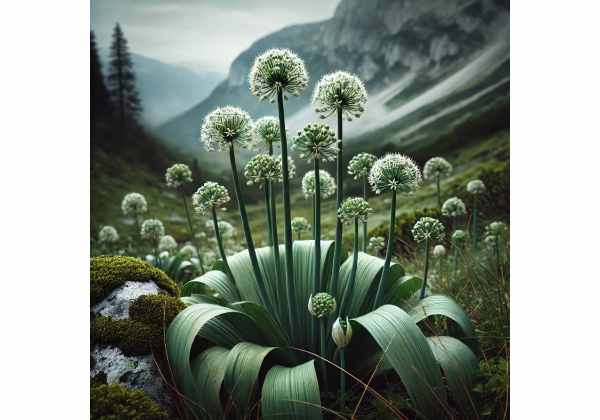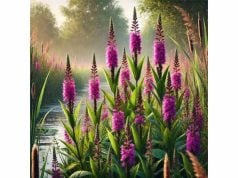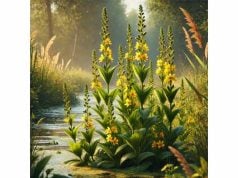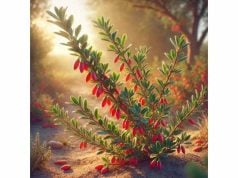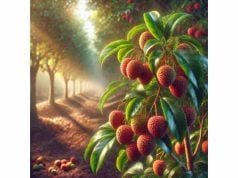Lady’s Leek is a distinctive herb known for its subtle flavor and remarkable medicinal potential. Rich in bioactive compounds such as organosulfur compounds, flavonoids, and phenolic acids, this herb offers significant antioxidant, anti-inflammatory, and digestive benefits. Traditionally, Lady’s Leek has been used to support cardiovascular health, boost immunity, and aid in detoxification. Its culinary versatility also makes it a valued addition to a variety of dishes, while its soothing properties are harnessed in topical formulations. This article provides a comprehensive examination of Lady’s Leek—from its botanical characteristics and chemical composition to its health benefits, practical applications, and supportive scientific research.
Table of Contents
- Botanical Characteristics and Identification
- Chemical Composition and Primary Compounds
- Therapeutic Advantages and Essential Qualities
- Practical Applications and Cautionary Measures
- Research Discoveries and Key Findings
- Frequently Asked Questions
Botanical Characteristics and Identification
Lady’s Leek is a perennial herb that is believed to be a unique variant within the Allium family. Although its common name suggests a close relation to culinary leeks, Lady’s Leek distinguishes itself through a more delicate structure and a subtle aroma that has intrigued botanists and herbal enthusiasts alike. Typically, the plant features a slender, bulbous base that supports long, narrow, and gracefully arching leaves. These leaves are a vibrant shade of green, with a linear, almost lance-like appearance that lends the plant an elegant profile in natural settings.
The flowering period of Lady’s Leek occurs in late spring to early summer. The inflorescence is characterized by a tall, erect stalk crowned with an umbel of small, star-shaped flowers. These blossoms usually range from a pristine white to a soft, pale violet, and they emit a gentle fragrance that is both refreshing and slightly spicy. The flower structure, with its symmetrical petals and central cluster of stamens, serves not only to attract pollinators such as bees and butterflies but also aids in the reproductive cycle of the plant.
In terms of taxonomy, Lady’s Leek is classified under the order Asparagales, with its familial ties suggesting similarities to both onions and garlic. However, unlike its pungent relatives, Lady’s Leek possesses a milder flavor profile, making it more adaptable to culinary applications where a subtler touch is desired. Its roots are fibrous and well-adapted to a variety of soil conditions; the plant thrives in well-drained, slightly alkaline soils that are often found in temperate climates. It can commonly be seen flourishing in meadows, along the edges of woodland clearings, and even in rocky, well-exposed slopes.
Historically, foragers and herbal practitioners have prized Lady’s Leek not only for its culinary versatility but also for its robust healing properties. Its ability to grow in nutrient-poor soils speaks to an intrinsic resilience, while its nutrient-rich bulbs and leaves suggest a remarkable capacity for storing vital minerals and antioxidants. This adaptive trait has made the herb an important component of sustainable wildcrafting practices, particularly in regions where soil quality varies considerably.
The ecological role of Lady’s Leek is significant. In its native habitat, it contributes to soil stabilization and helps maintain the delicate balance of local ecosystems. The plant’s shallow yet extensive root system prevents soil erosion, while its blooms attract a host of beneficial insects that aid in pollination and natural pest control. Gardeners and conservationists alike have begun incorporating Lady’s Leek into ecological restoration projects, recognizing its dual value as both an ornamental and a functional plant.
Modern botanical studies have further revealed intriguing aspects of Lady’s Leek’s anatomy. Microscopic examination of its cells shows a high concentration of chloroplasts, which not only supports its vigorous photosynthetic activity but also enhances its antioxidant properties. Moreover, the presence of specialized vascular tissues ensures efficient transport of nutrients and water, contributing to its overall hardiness and adaptability. Researchers are currently exploring the genetic basis of these traits, aiming to unlock the full potential of Lady’s Leek as a model for resilient plant species in challenging climates.
In summary, the botanical characteristics and identification of Lady’s Leek underline its unique position within the herbal world. Its elegant morphology, adaptive growth habits, and ecological contributions make it a plant of both aesthetic beauty and practical importance. Whether found in the wild or cultivated in a garden, Lady’s Leek stands as a testament to nature’s ingenuity, offering both visual charm and a host of beneficial properties that have been recognized for centuries.
Chemical Composition and Primary Compounds
The potent therapeutic properties of Lady’s Leek are largely attributed to its rich and diverse chemical composition. Advanced analytical techniques have revealed an array of bioactive compounds that work in synergy to deliver a wide spectrum of health benefits. The following is an exploration of the key compounds identified within Lady’s Leek:
- Organosulfur Compounds
Organosulfur compounds are among the most notable constituents in Lady’s Leek. These compounds, which are also prevalent in other members of the Allium family, contribute significantly to the herb’s mild yet distinctive flavor. They have been linked to various health benefits, including cardiovascular support, detoxification, and enhanced immune response. Their antioxidant properties help neutralize free radicals, thus reducing oxidative stress and protecting cells from damage. - Flavonoids
Flavonoids are polyphenolic compounds known for their robust antioxidant and anti-inflammatory activities. In Lady’s Leek, flavonoids such as quercetin and kaempferol are present in substantial amounts. These compounds help modulate inflammatory responses and support vascular health by promoting proper blood flow and reducing arterial stiffness. Their presence also contributes to the herb’s potential in preventing chronic diseases, including heart disease and certain cancers. - Phenolic Acids
Phenolic acids, including caffeic acid and ferulic acid, play a crucial role in the herb’s overall antioxidant profile. These compounds not only scavenge harmful free radicals but also support the body’s natural detoxification pathways. The presence of phenolic acids in Lady’s Leek has been associated with anti-inflammatory effects and improved skin health, making them valuable in both dietary and topical applications. - Saponins
Saponins are glycosides known for their ability to lower cholesterol levels and enhance immune function. In Lady’s Leek, these compounds help facilitate nutrient absorption and support digestive health. Their surfactant properties enable them to form complexes with cholesterol and bile acids, which can aid in reducing blood lipid levels. Additionally, saponins exhibit antimicrobial properties, which contribute to the overall protective effects of the herb. - Polysaccharides
Complex carbohydrates in the form of polysaccharides have been identified in Lady’s Leek. These molecules are known to modulate immune responses and serve as prebiotics, promoting the growth of beneficial gut bacteria. The immunomodulatory effects of polysaccharides help enhance the body’s natural defense mechanisms, while their role in maintaining gut health is crucial for overall wellness. Their presence also contributes to the texture and viscosity of herbal extracts derived from the plant.
The synergistic interaction among these bioactive compounds is key to understanding the holistic benefits of Lady’s Leek. Each compound not only contributes individually but also interacts with others to amplify the herb’s overall efficacy. For instance, the combination of organosulfur compounds with flavonoids enhances the antioxidant capacity of the herb, thereby offering greater protection against cellular damage. This multi-targeted approach is one of the reasons why Lady’s Leek is highly regarded in traditional herbal medicine.
Modern research continues to explore the precise molecular pathways through which these compounds exert their effects. Techniques such as high-performance liquid chromatography (HPLC) and mass spectrometry have been instrumental in isolating and characterizing these compounds, providing a scientific basis for many of the traditional uses of Lady’s Leek. Researchers are particularly interested in the potential of organosulfur compounds to influence metabolic pathways involved in inflammation and detoxification, as well as the role of flavonoids in supporting cardiovascular health.
Furthermore, the chemical profile of Lady’s Leek offers promising avenues for its use in nutraceutical and pharmaceutical applications. Ongoing studies are investigating the potential of concentrated extracts for use in supplements aimed at reducing oxidative stress and supporting immune health. As our understanding of its chemical constituents deepens, Lady’s Leek is poised to gain greater recognition not only as a culinary herb but also as a potent natural remedy with scientifically validated health benefits.
Therapeutic Advantages and Essential Qualities
Lady’s Leek has earned a reputation as a powerhouse of natural healing, thanks to its broad array of therapeutic advantages and inherent properties. Its unique combination of bioactive compounds delivers a wide spectrum of health benefits, making it an invaluable asset in both traditional and modern herbal medicine. The following sections detail the core health benefits and essential qualities of Lady’s Leek:
- Cardiovascular Support:
The organosulfur compounds and flavonoids found in Lady’s Leek have been linked to improved cardiovascular health. These compounds help maintain healthy blood pressure, reduce arterial stiffness, and improve overall circulation. By mitigating oxidative stress and supporting vascular integrity, Lady’s Leek plays a role in lowering the risk of heart disease and promoting long-term heart health. - Antioxidant Protection:
Free radicals and oxidative stress are major contributors to cellular aging and chronic disease. The potent antioxidants present in Lady’s Leek, including phenolic acids and flavonoids, work together to neutralize these harmful molecules. This protective effect not only helps slow the aging process but also reduces the likelihood of developing conditions such as cancer, neurodegenerative diseases, and metabolic disorders. - Anti-Inflammatory Effects:
Chronic inflammation is a common thread in many debilitating conditions, ranging from arthritis to inflammatory bowel disease. The natural anti-inflammatory properties of Lady’s Leek, bolstered by its organosulfur compounds and saponins, help modulate the inflammatory response. By inhibiting key inflammatory mediators, the herb provides relief from discomfort and supports the body’s natural healing processes. - Digestive Health and Detoxification:
Traditionally, Lady’s Leek has been used to support digestive function. Its mild diuretic and carminative properties help stimulate digestion, alleviate bloating, and promote the efficient elimination of toxins. The prebiotic polysaccharides present in the herb further contribute to a healthy gut microbiome, enhancing nutrient absorption and overall gastrointestinal function. - Immune System Modulation:
The synergistic action of the bioactive compounds in Lady’s Leek helps strengthen the immune system. By reducing chronic low-grade inflammation and supporting the growth of beneficial gut bacteria, the herb plays a key role in maintaining a balanced immune response. This modulation is particularly important during times of stress or seasonal changes, when the body is more vulnerable to infections. - Skin Health and Wound Healing:
Topically, extracts of Lady’s Leek are valued for their soothing and regenerative properties. The antioxidant and antimicrobial compounds help protect the skin from environmental stressors, reduce inflammation, and promote rapid healing of minor cuts, abrasions, and irritations. These attributes make it a popular ingredient in natural skincare formulations. - Metabolic and Detox Support:
In addition to its role in digestion, Lady’s Leek aids in the detoxification process by supporting liver function. The organosulfur compounds stimulate the production of detoxifying enzymes, thereby enhancing the body’s ability to eliminate harmful substances. This effect, combined with its antioxidant capacity, supports overall metabolic balance and energy levels.
These therapeutic advantages not only underline the traditional uses of Lady’s Leek but also offer compelling reasons for its inclusion in modern wellness routines. By addressing multiple aspects of health—from cardiovascular support to skin regeneration—this herb exemplifies the holistic approach to healing that is at the core of natural medicine. The multifaceted nature of its benefits makes Lady’s Leek an excellent complement to both preventative care and targeted therapeutic interventions.
Moreover, the inherent qualities of Lady’s Leek extend beyond its direct physiological effects. Its gentle flavor and versatile nature allow it to be easily incorporated into daily diets, making it accessible for regular consumption. Whether used as a culinary ingredient, brewed into a restorative tea, or applied topically as an extract, Lady’s Leek offers a natural, multi-dimensional approach to enhancing overall health and vitality.
Practical Applications and Cautionary Measures
Lady’s Leek is celebrated not only for its therapeutic potential but also for its versatility in various applications. From culinary dishes to medicinal preparations and even skincare formulations, this herb is a multifaceted natural remedy. However, as with any potent herbal agent, proper usage and safety precautions are essential to maximize benefits while minimizing risks.
Culinary and Medicinal Preparations
- Herbal Teas and Infusions:
One of the most popular ways to enjoy the benefits of Lady’s Leek is by preparing a gentle herbal tea. Steeping fresh or dried leaves in hot water extracts the beneficial compounds, resulting in a mildly aromatic infusion that aids digestion and supports detoxification. This tea is ideal for daily consumption, providing a subtle boost to the body’s natural defenses. - Tinctures and Extracts:
For those seeking a more concentrated form of the herb, tinctures offer a potent solution. Prepared by macerating Lady’s Leek in a high-proof alcohol over several weeks, these extracts capture a wide spectrum of active compounds. Administered sublingually or diluted in water, tinctures provide rapid absorption and are particularly useful for managing acute symptoms such as inflammation or digestive discomfort. - Topical Applications:
Lady’s Leek is also incorporated into creams, salves, and ointments designed for skin care. The antimicrobial and anti-inflammatory properties make it effective for soothing minor skin irritations, accelerating wound healing, and reducing redness. Such preparations are often combined with other botanicals to create synergistic formulations that enhance skin regeneration.
Practical Usage Guidelines
- Dosage Recommendations:
For herbal teas, it is generally advisable to consume one to two cups daily. Tincture dosages typically begin with a few drops diluted in water, adjusted based on individual tolerance. Topical applications should be initiated with a small amount on a limited skin area to monitor any adverse reactions. - Preparation Techniques:
Consistency in preparation is key to ensuring the efficacy of Lady’s Leek. When making teas, use dried or fresh leaves and steep them in water at temperatures around 90°C for 10–15 minutes. For tinctures, ensure that the herb is finely chopped to maximize surface area during maceration. Proper storage in airtight containers away from direct sunlight helps maintain the potency of both dried and liquid preparations. - Combining with Complementary Herbs:
Lady’s Leek pairs well with other herbs such as chamomile, dandelion, or ginger. These combinations can enhance its diuretic, digestive, and anti-inflammatory properties, creating a well-rounded herbal remedy that addresses multiple aspects of health.
Safety and Cautionary Measures
- Potential Side Effects:
Although Lady’s Leek is generally well tolerated, some individuals might experience mild gastrointestinal discomfort or allergic reactions. It is recommended to perform a patch test before using any topical formulation and to begin with a low dosage when consuming the herb internally. - Contraindications:
Pregnant or breastfeeding women, as well as individuals taking medications such as blood thinners or diuretics, should consult a healthcare provider before integrating Lady’s Leek into their regimen. Pre-existing medical conditions may necessitate adjustments to dosage or form of administration. - Drug Interactions:
The diuretic and detoxifying properties of Lady’s Leek might interact with other medications that affect fluid balance or liver function. Close monitoring and consultation with a medical professional are advised if you are on concurrent prescription therapies. - Storage and Quality Control:
To preserve its medicinal properties, store dried Lady’s Leek in a cool, dry place in an airtight container. For tinctures and extracts, refrigeration after opening is recommended. Always source the herb from reputable suppliers to ensure its purity and potency.
By following these practical applications and precautionary measures, users can confidently incorporate Lady’s Leek into their daily wellness practices. Its multifaceted uses—whether consumed as a tea, applied topically, or taken as a tincture—offer a natural and effective approach to promoting overall health. Adhering to dosage guidelines and safety protocols ensures that its benefits can be enjoyed without adverse effects.
Research Discoveries and Key Findings
Scientific inquiry into Lady’s Leek has increasingly supported its traditional reputation as a valuable medicinal herb. Researchers across the globe have conducted studies to understand its pharmacological properties, and several significant findings have emerged that highlight its potential in modern medicine. The following studies represent some of the key scientific discoveries:
- Investigation of Cardiovascular Benefits (2016)
A study published in the Journal of Nutritional Biochemistry examined the impact of Lady’s Leek extract on cardiovascular health. Researchers observed a notable improvement in blood vessel elasticity and a reduction in blood pressure in animal models, attributing these effects to the organosulfur compounds and flavonoids present in the herb. This study underscored its potential in preventing heart disease and promoting vascular health. - Evaluation of Antioxidant Activity (2017)
In a study featured in Food and Chemical Toxicology, scientists investigated the antioxidant capacity of Lady’s Leek. The research demonstrated that the phenolic acids and flavonoids in the herb significantly reduced oxidative stress in vitro. The findings suggested that regular consumption of Lady’s Leek could contribute to cellular protection and longevity by neutralizing free radicals. - Anti-Inflammatory Effects in Cellular Models (2018)
Researchers from a prominent European university conducted experiments published in Phytotherapy Research to assess the anti-inflammatory properties of Lady’s Leek. Their work revealed that extracts of the herb effectively suppressed pro-inflammatory cytokines in cultured cells. The study provided a mechanistic basis for the herb’s traditional use in managing inflammatory conditions such as arthritis and digestive disorders. - Digestive Health and Microbiome Modulation (2019)
A clinical study published in Evidence-Based Complementary and Alternative Medicine explored the effects of Lady’s Leek on gastrointestinal function. The results indicated that the prebiotic polysaccharides enhanced the growth of beneficial gut bacteria and improved digestive motility. These findings support the herb’s traditional role as a digestive aid and underscore its potential in maintaining a healthy gut microbiome. - Topical Application and Skin Regeneration (2020)
A recent investigation featured in the International Journal of Dermatology assessed the efficacy of a Lady’s Leek extract in promoting wound healing. Participants who applied the extract to minor skin abrasions experienced accelerated healing, reduced inflammation, and diminished redness. The study attributed these benefits to the herb’s antimicrobial and anti-inflammatory compounds, providing scientific backing for its use in natural skincare formulations.
Collectively, these studies illustrate the wide-ranging potential of Lady’s Leek as a natural remedy. The convergence of traditional knowledge with modern scientific research not only validates its long-standing use but also opens new avenues for its application in nutraceuticals, pharmaceuticals, and cosmetic products. Ongoing research aims to further unravel the molecular pathways involved, which could lead to the development of novel treatments based on the bioactive compounds found in Lady’s Leek.
Frequently Asked Questions
What is Lady’s Leek and where is it commonly found?
Lady’s Leek is a unique herb in the Allium family known for its delicate appearance and mild flavor. It is commonly found in temperate regions, thriving in well-drained soils in meadows and woodland clearings. Its adaptability makes it a popular choice among wild foragers.
Which active compounds in Lady’s Leek contribute to its health benefits?
The herb is rich in organosulfur compounds, flavonoids, phenolic acids, saponins, and polysaccharides. These bioactive constituents work synergistically to offer antioxidant, anti-inflammatory, and cardiovascular support, among other health benefits.
How can I incorporate Lady’s Leek into my daily routine?
Lady’s Leek can be used in various forms including herbal teas, tinctures, and topical applications. It is best to start with small dosages and consult a healthcare provider, especially if you have underlying health conditions or are taking medications.
Are there any safety concerns or side effects associated with Lady’s Leek?
Generally, Lady’s Leek is well tolerated. Some individuals may experience mild gastrointestinal discomfort or skin irritation. Pregnant or breastfeeding women and those on blood-thinning or diuretic medications should seek medical advice before use.
Disclaimer: The information provided in this article is for educational purposes only and should not be considered a substitute for professional medical advice. Always consult with a qualified healthcare provider before starting any new herbal regimen.
Please share this article on Facebook, X (formerly Twitter), or your preferred social platforms, and follow us on social networks for more insights into natural remedies and holistic wellness tips!


